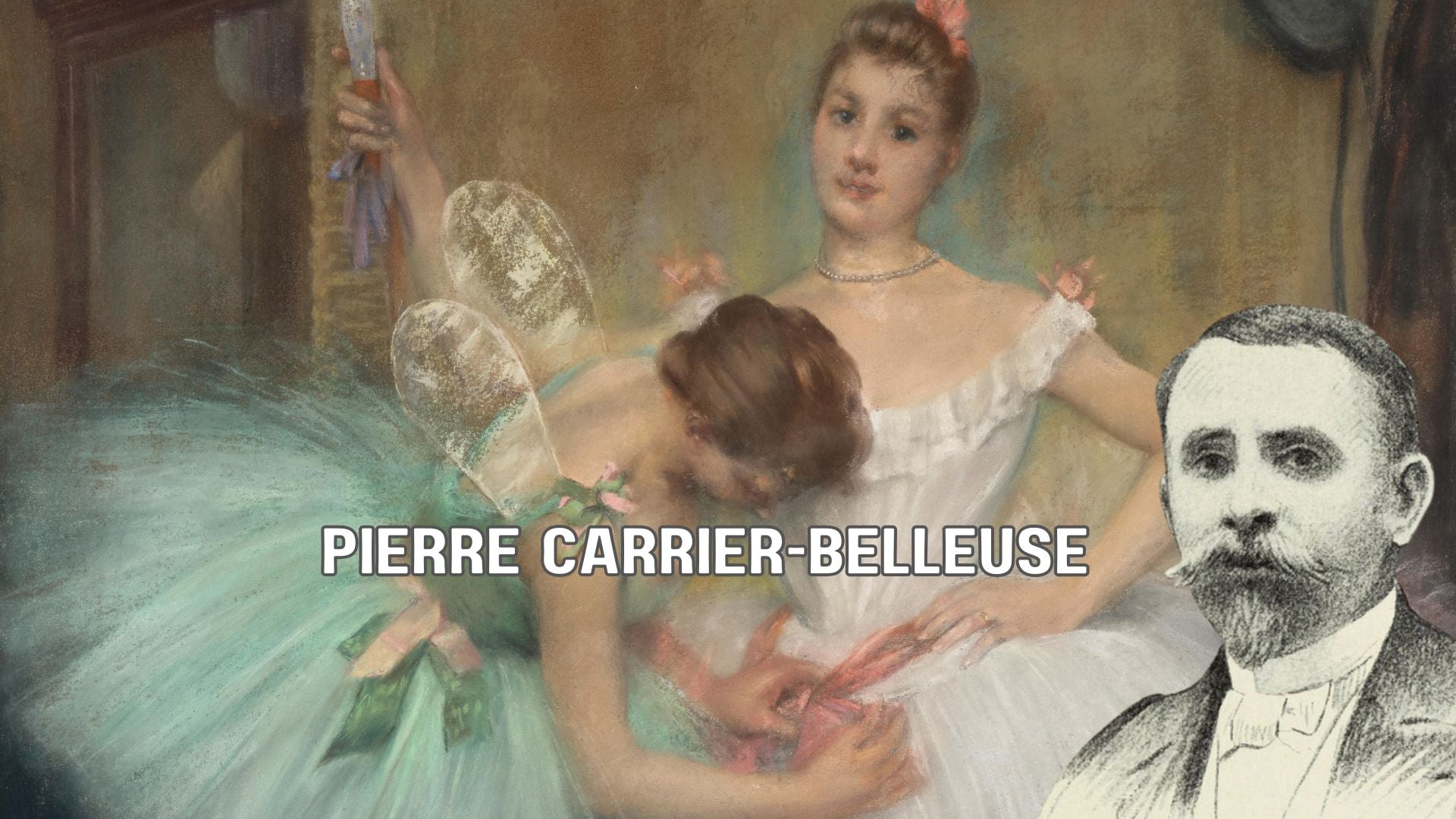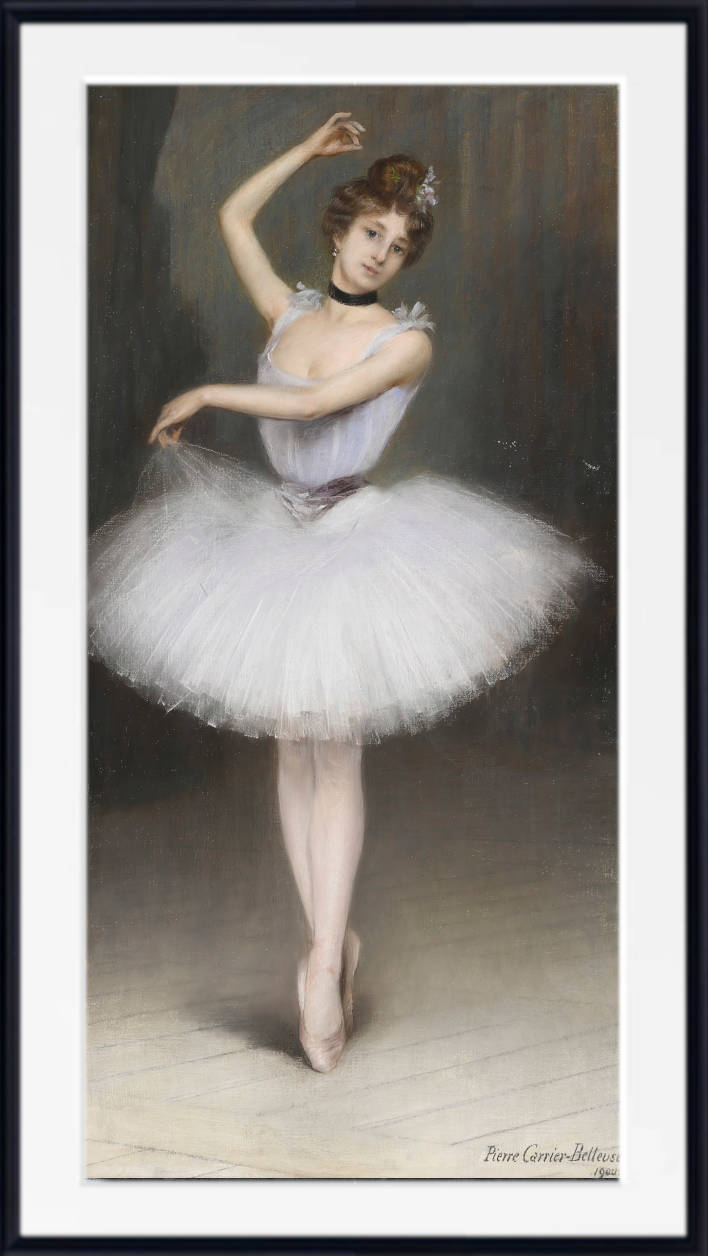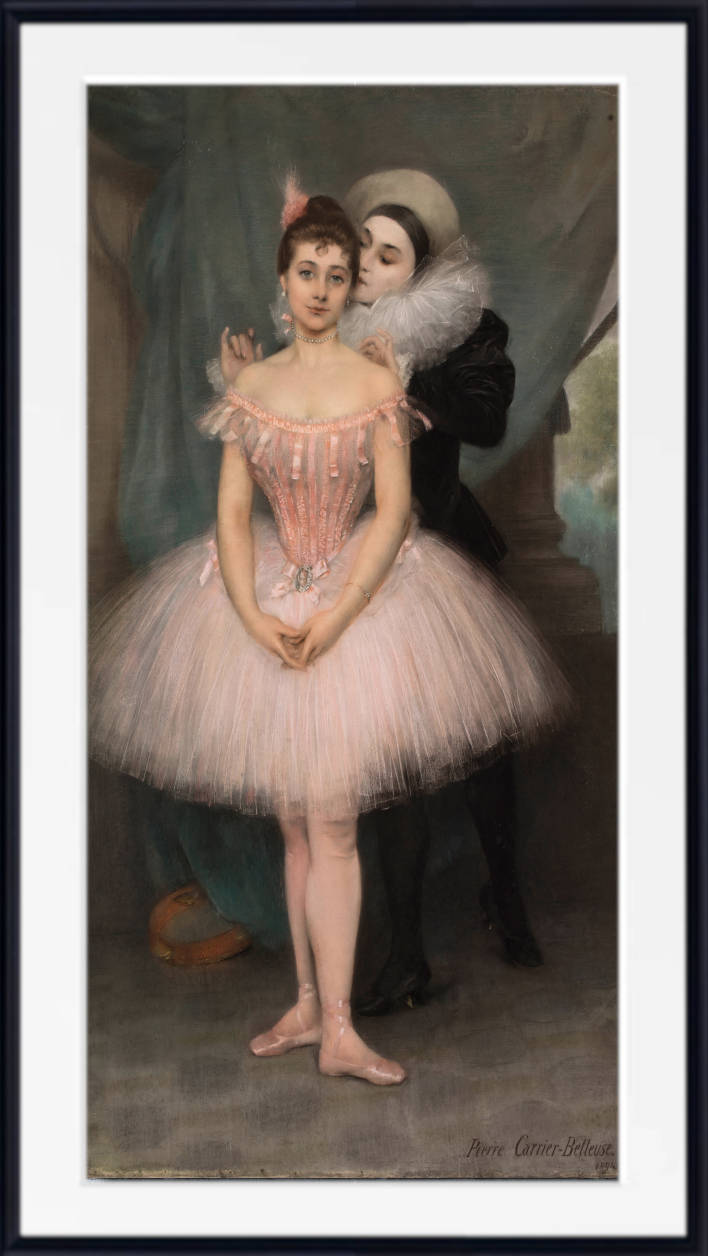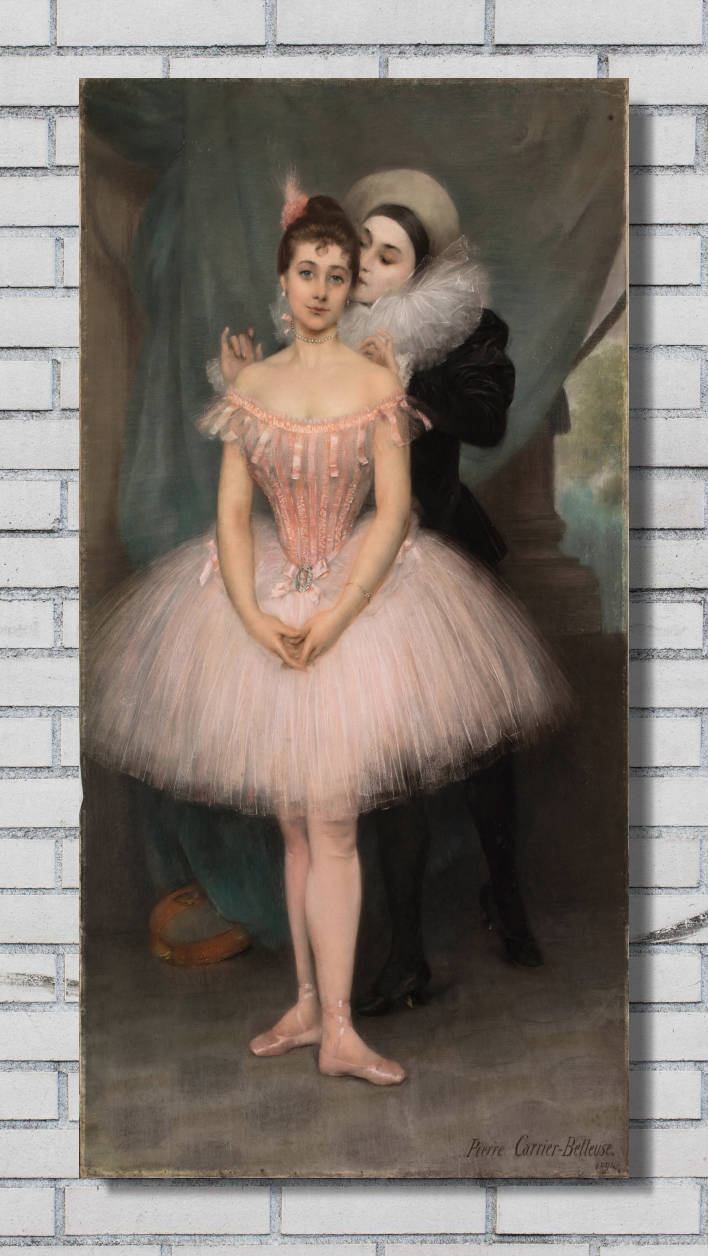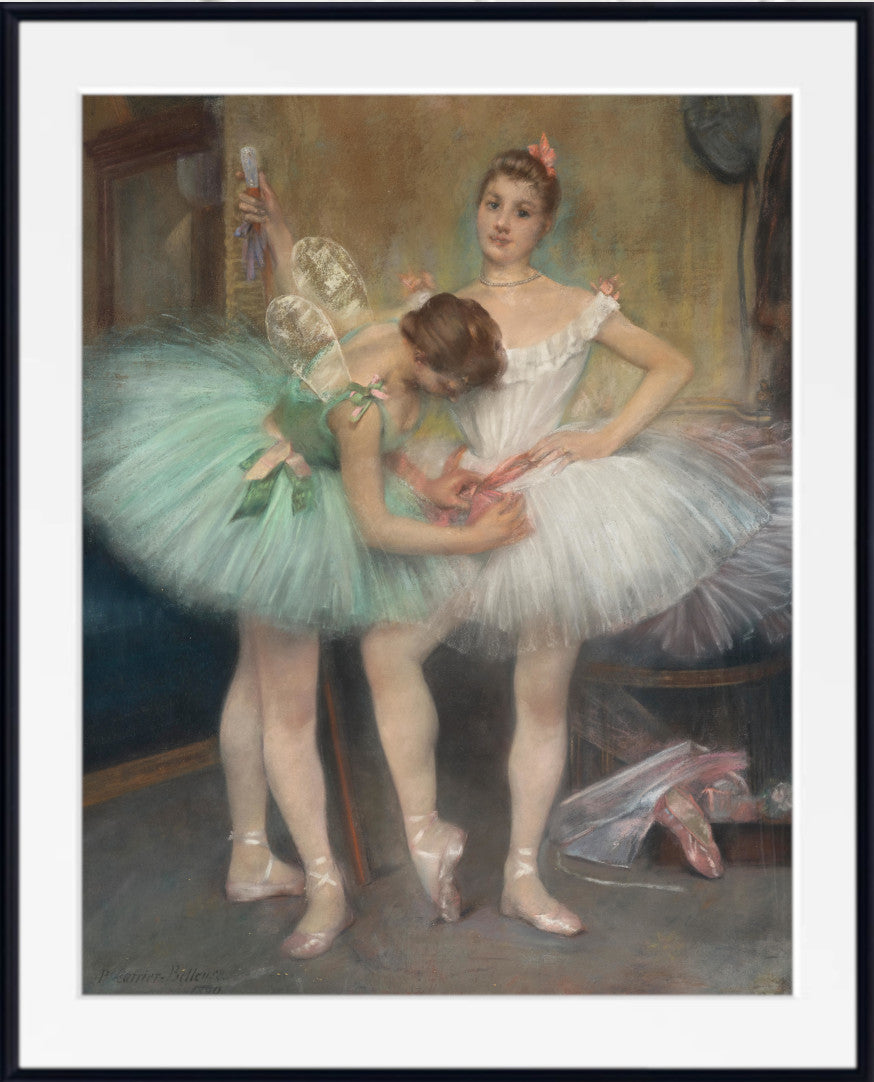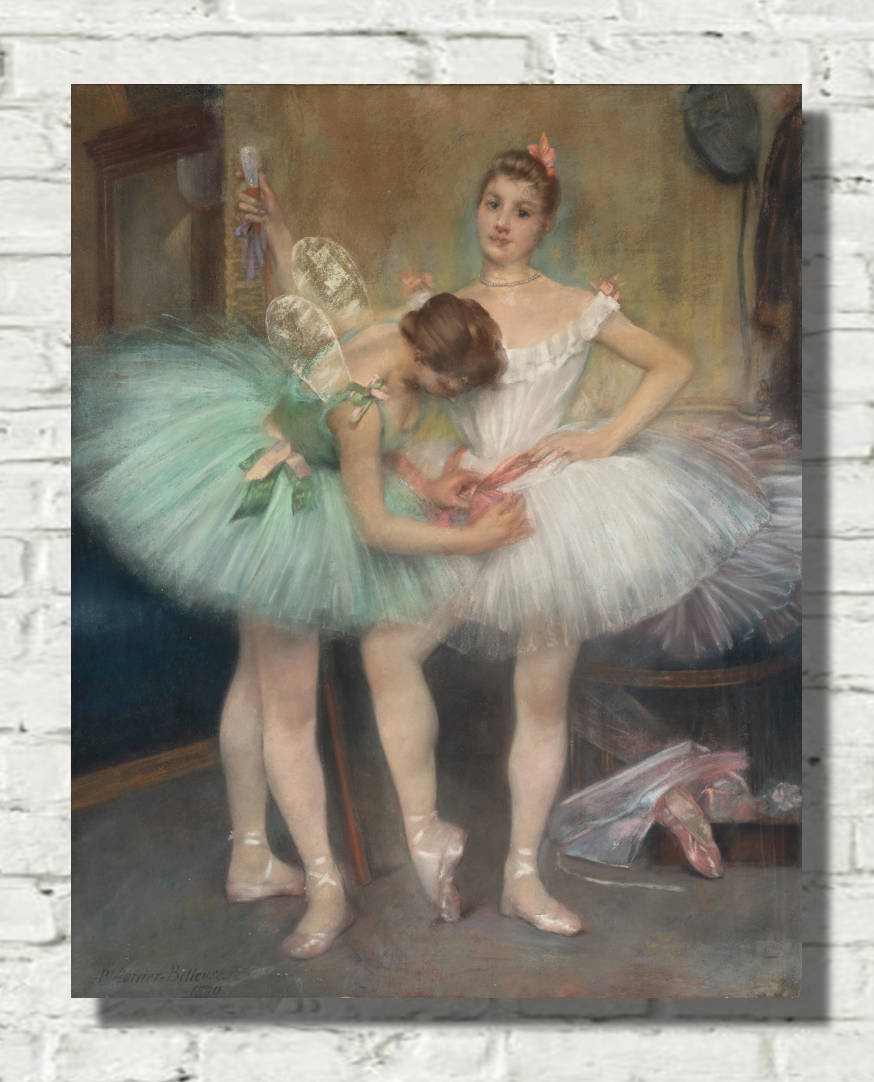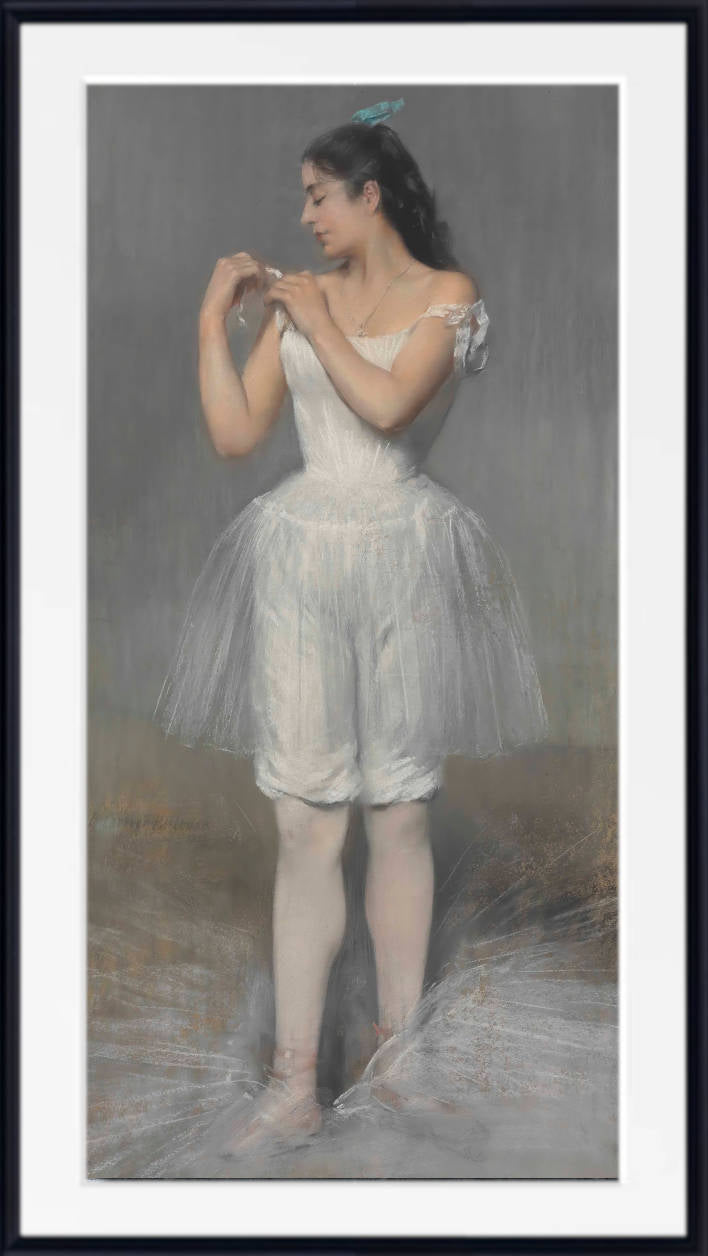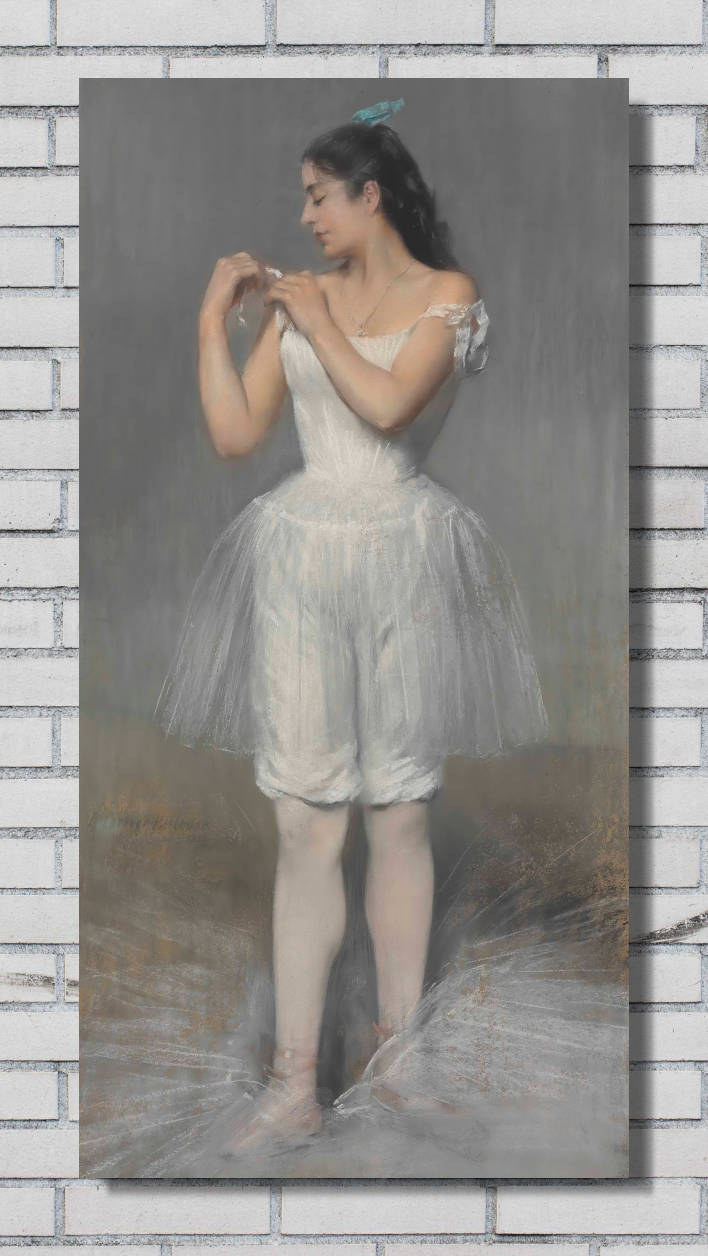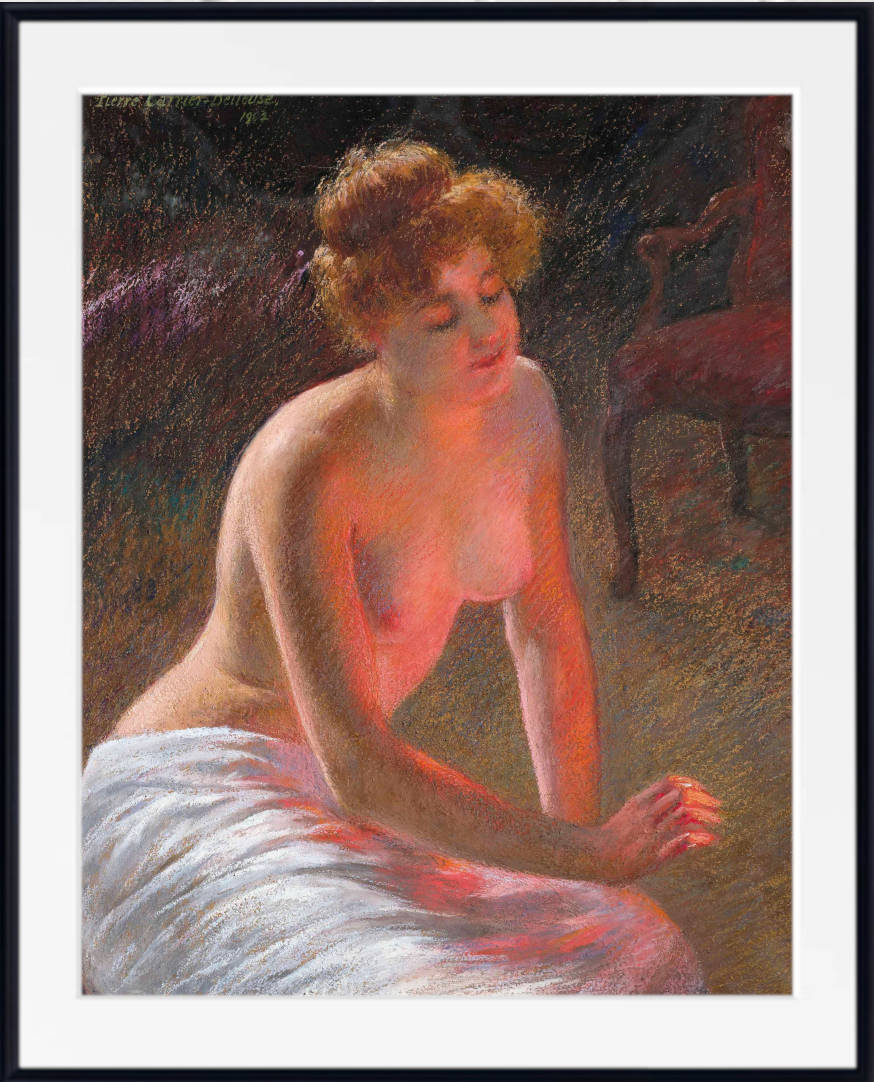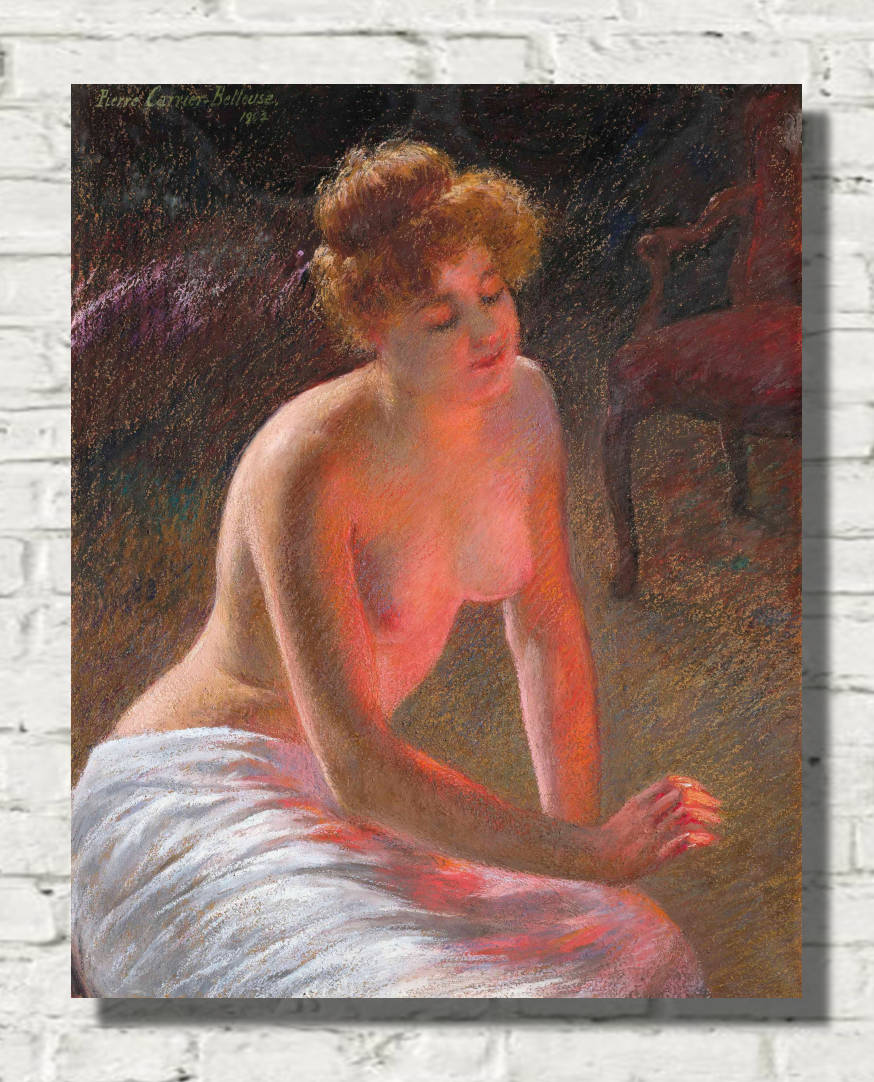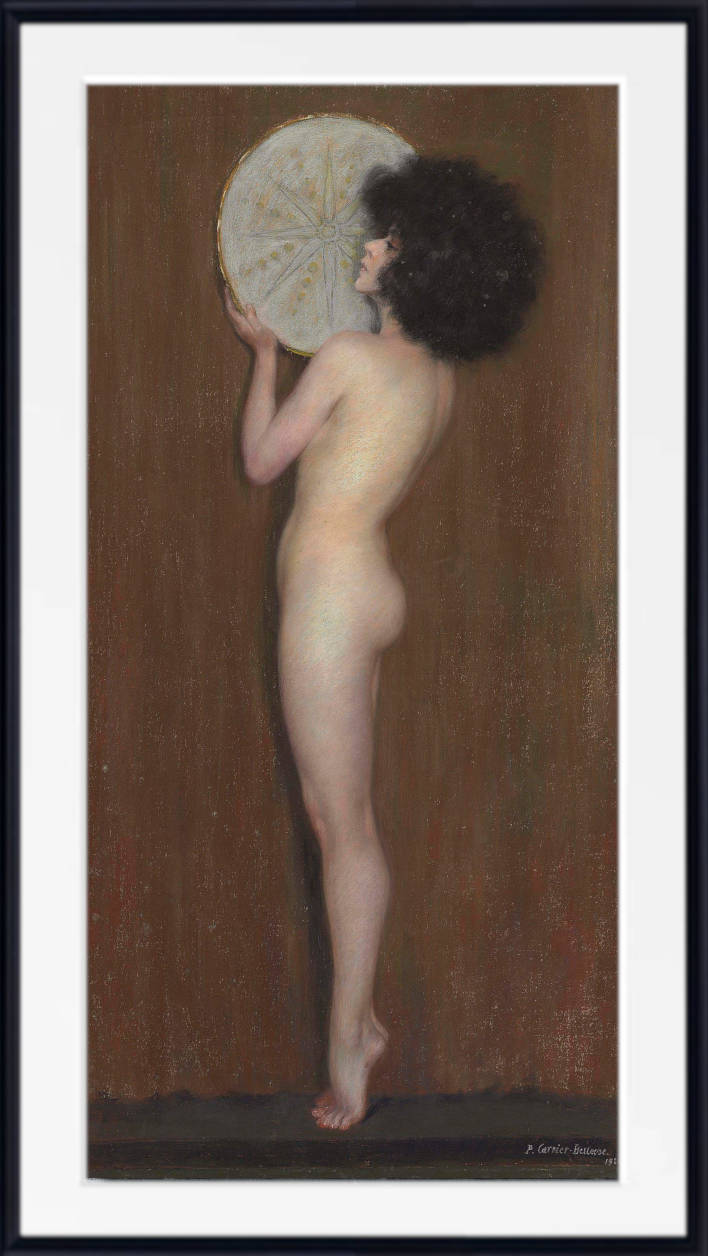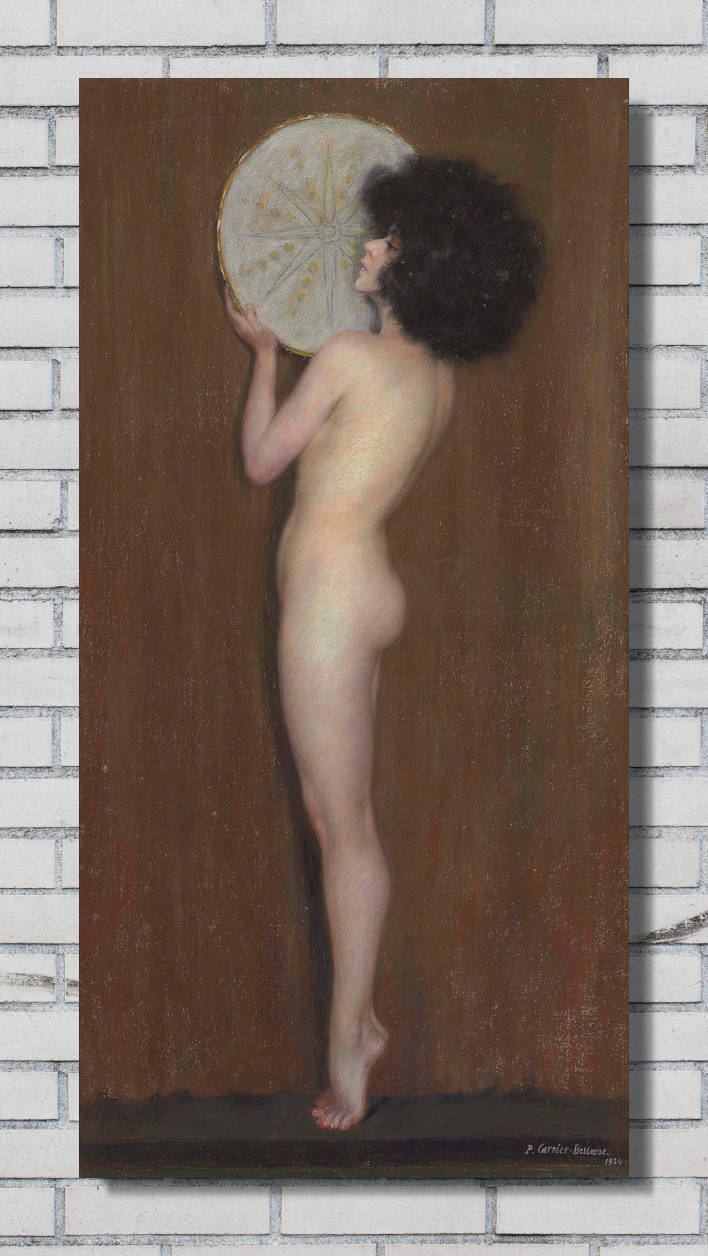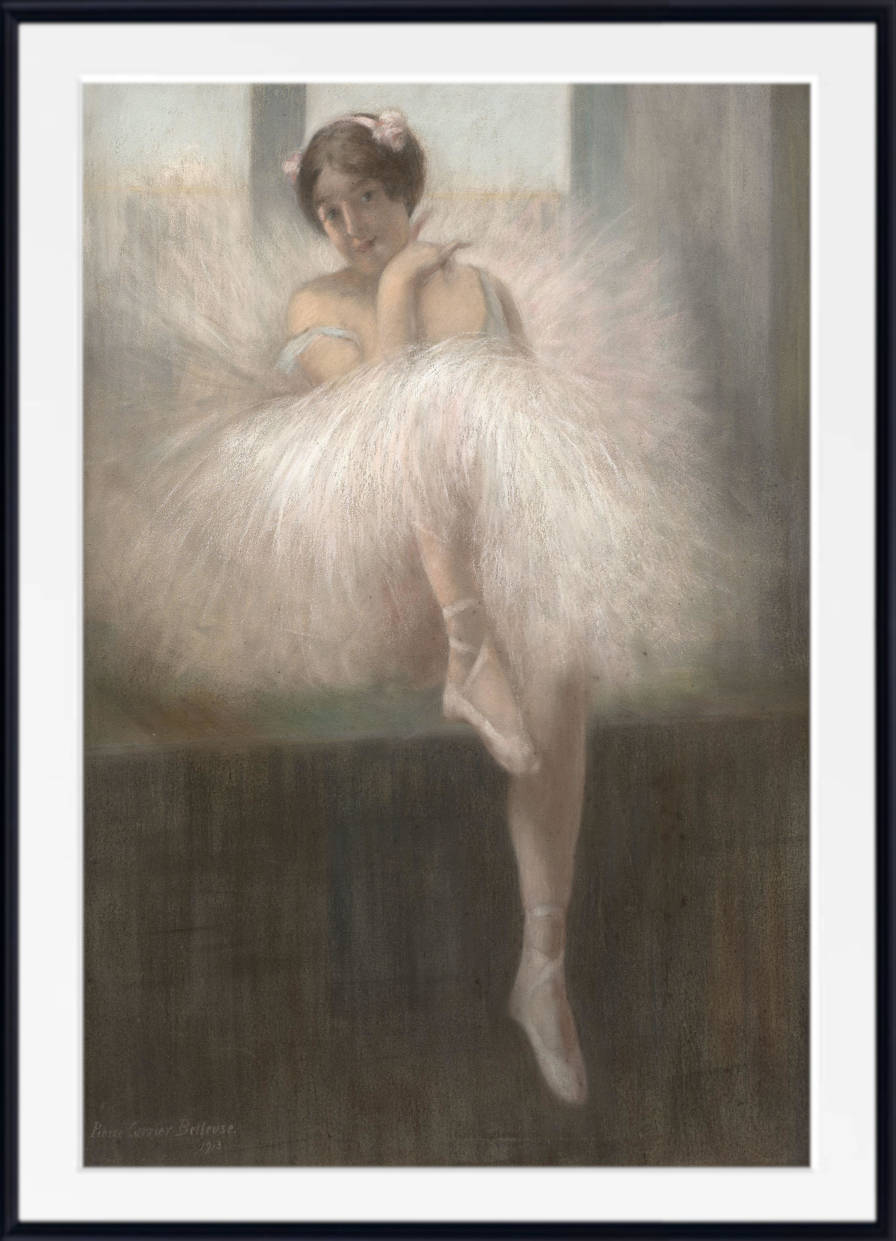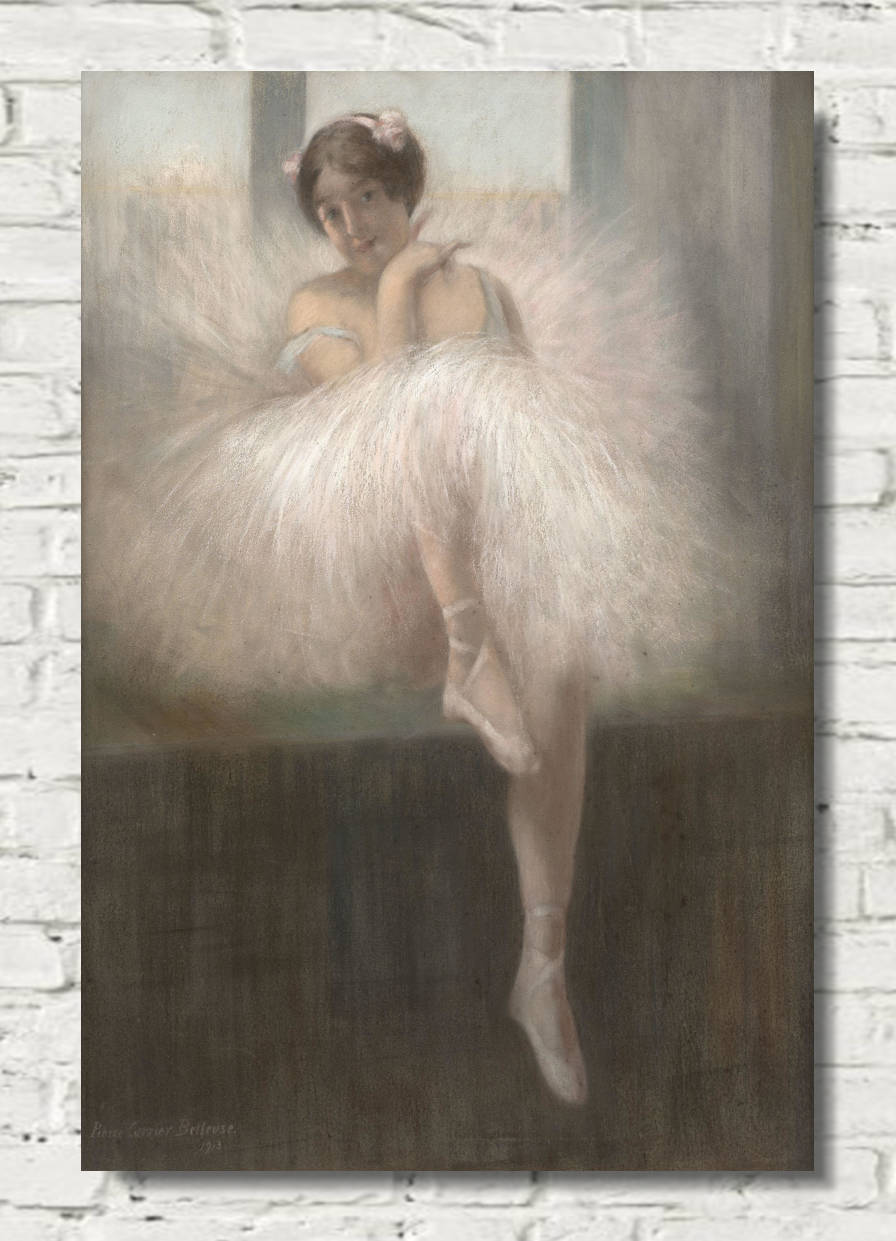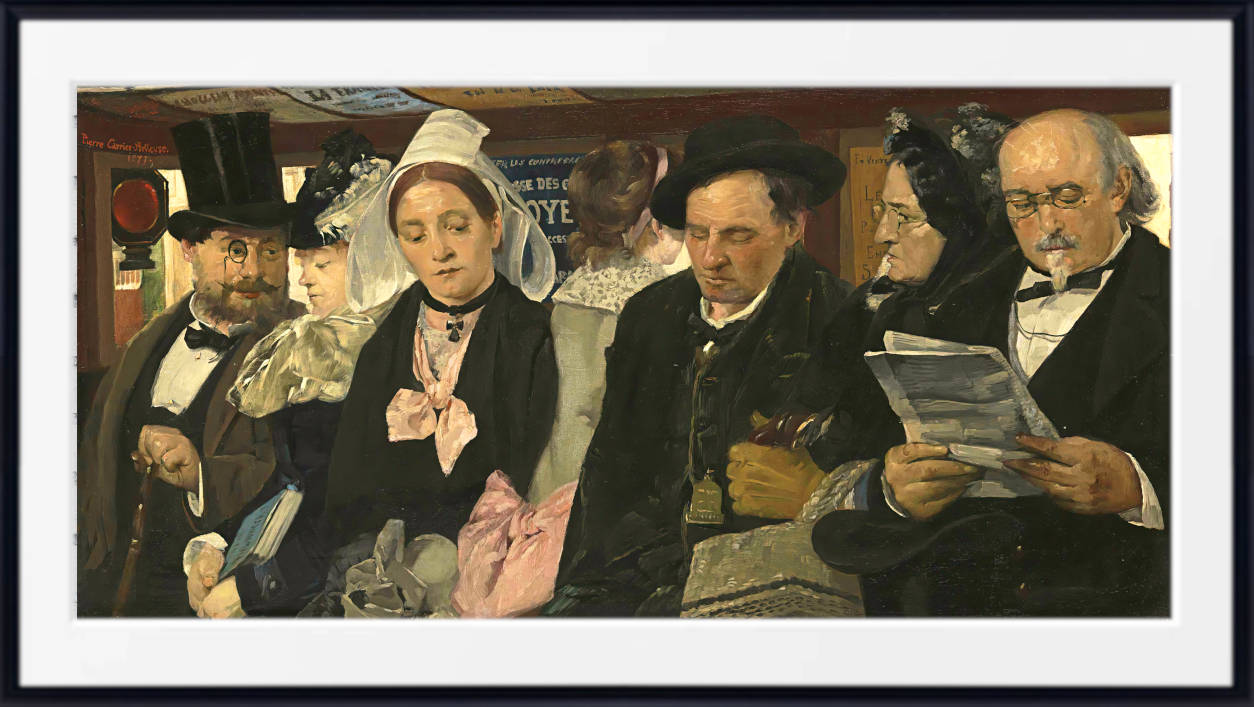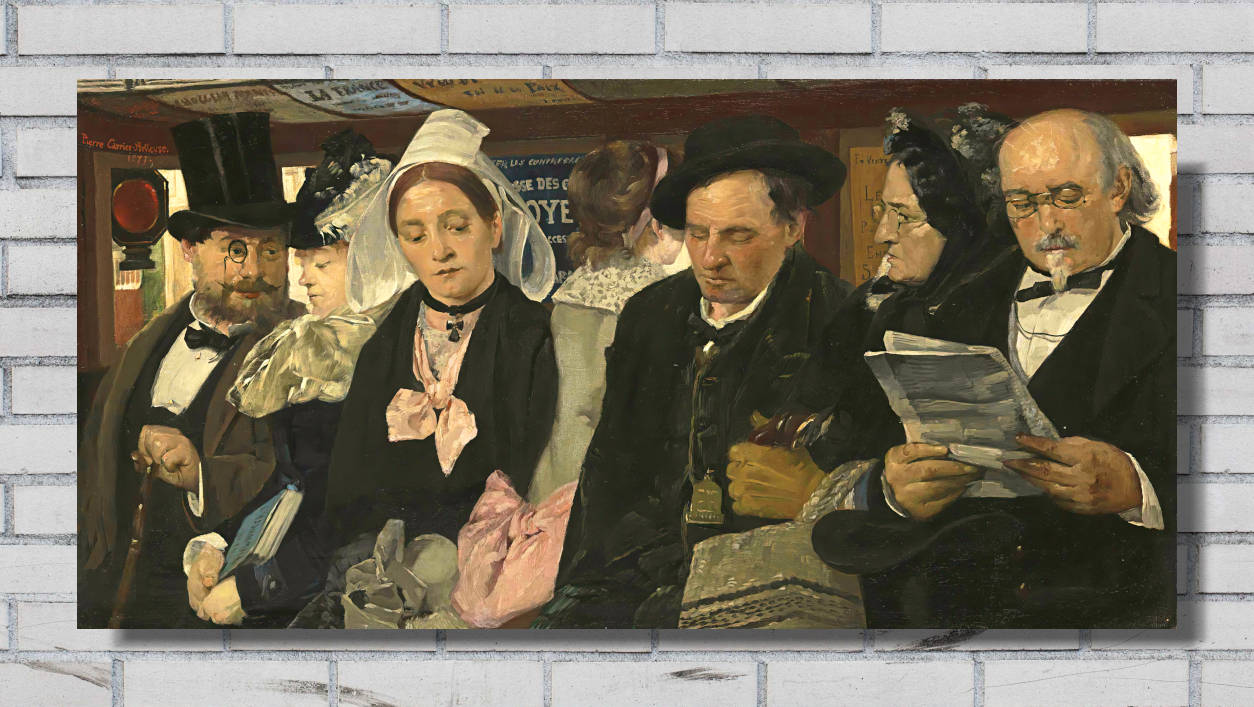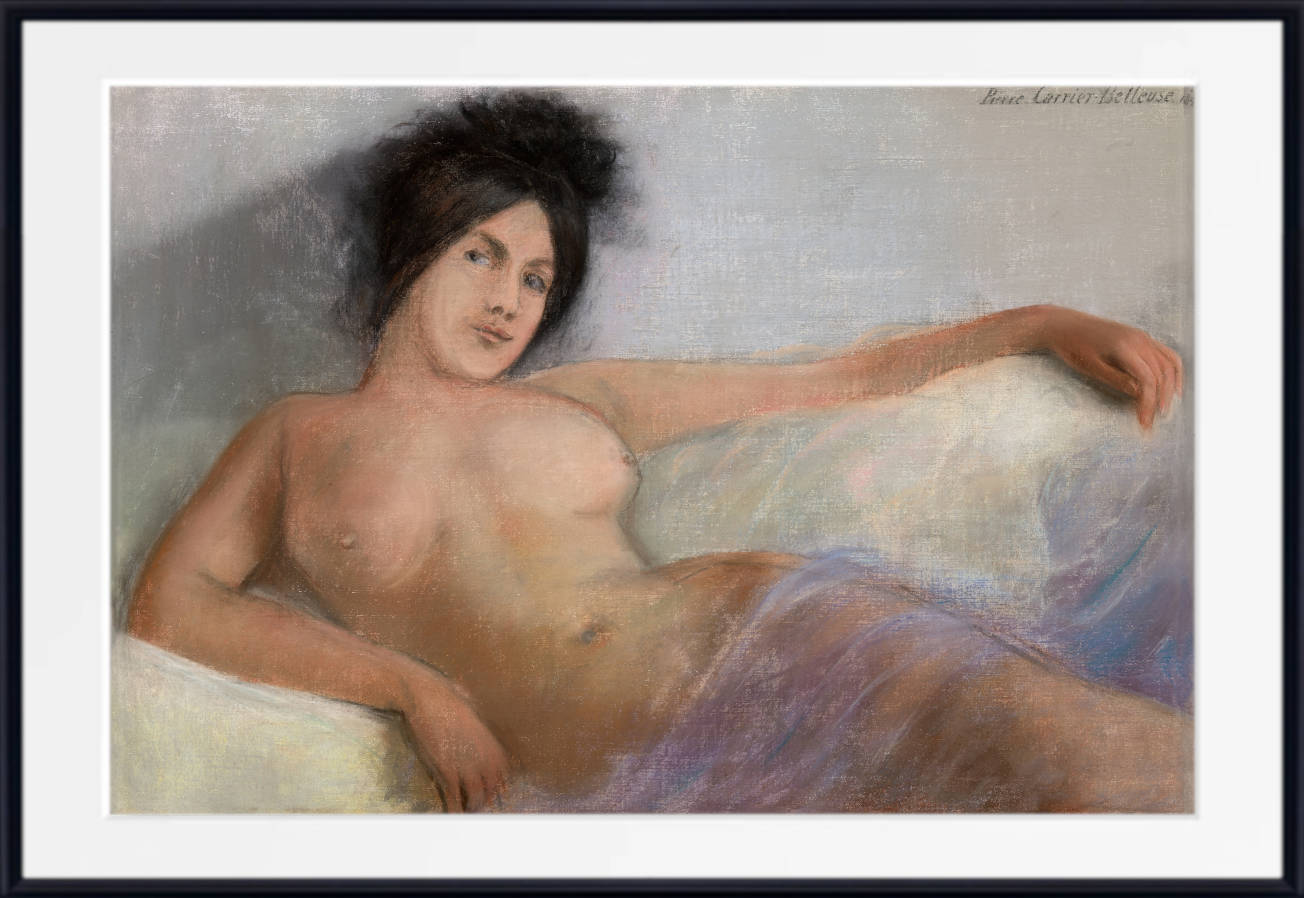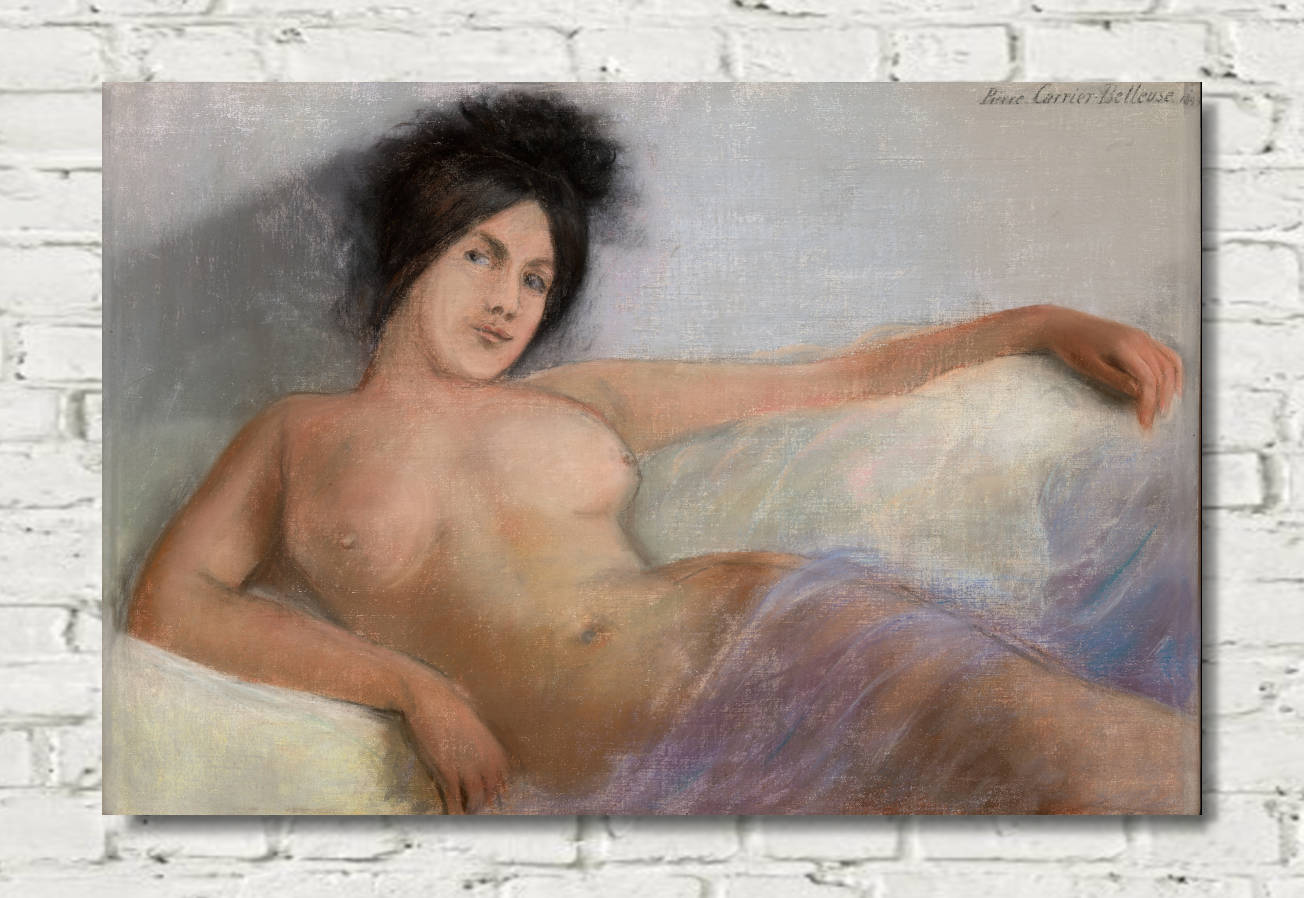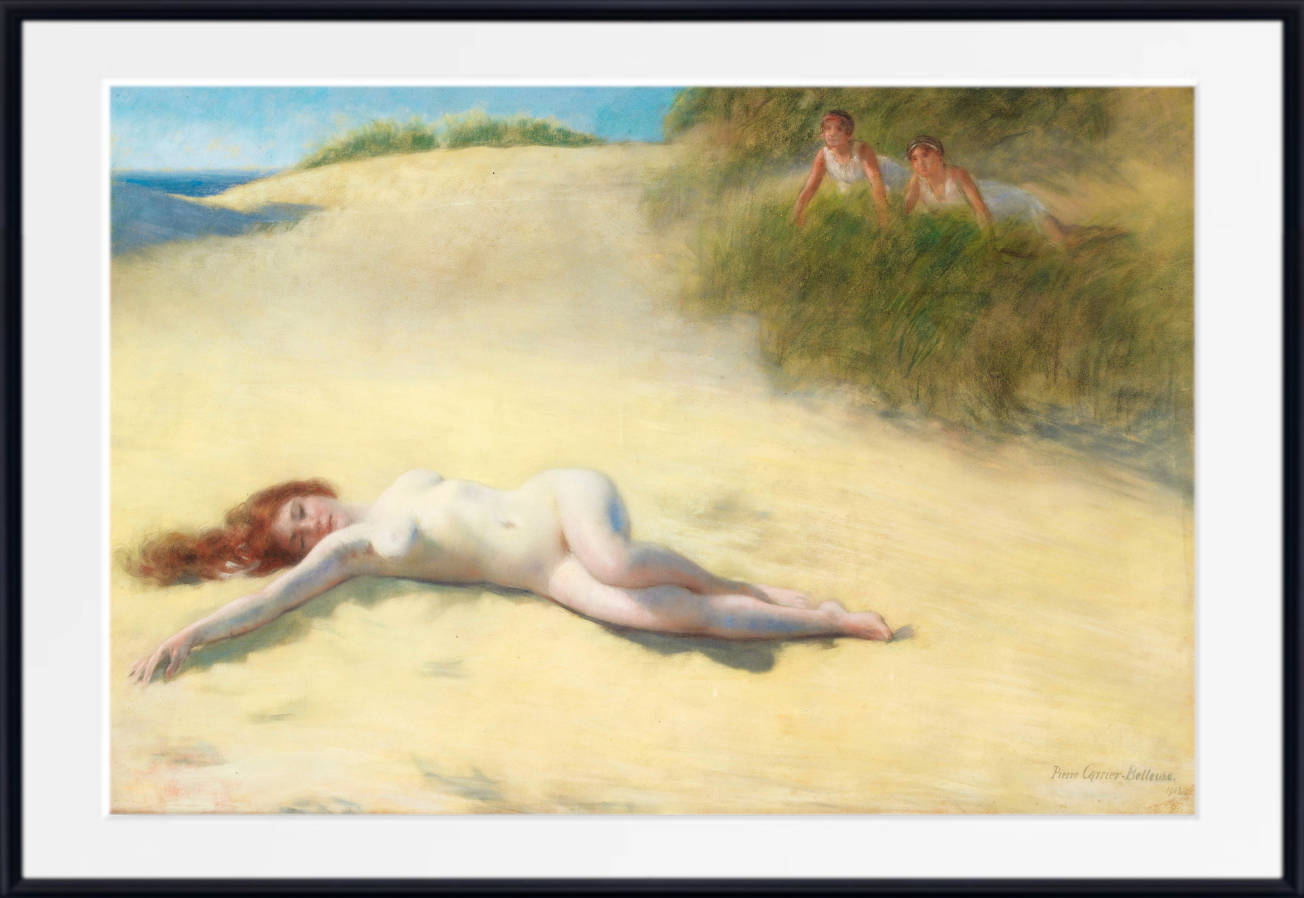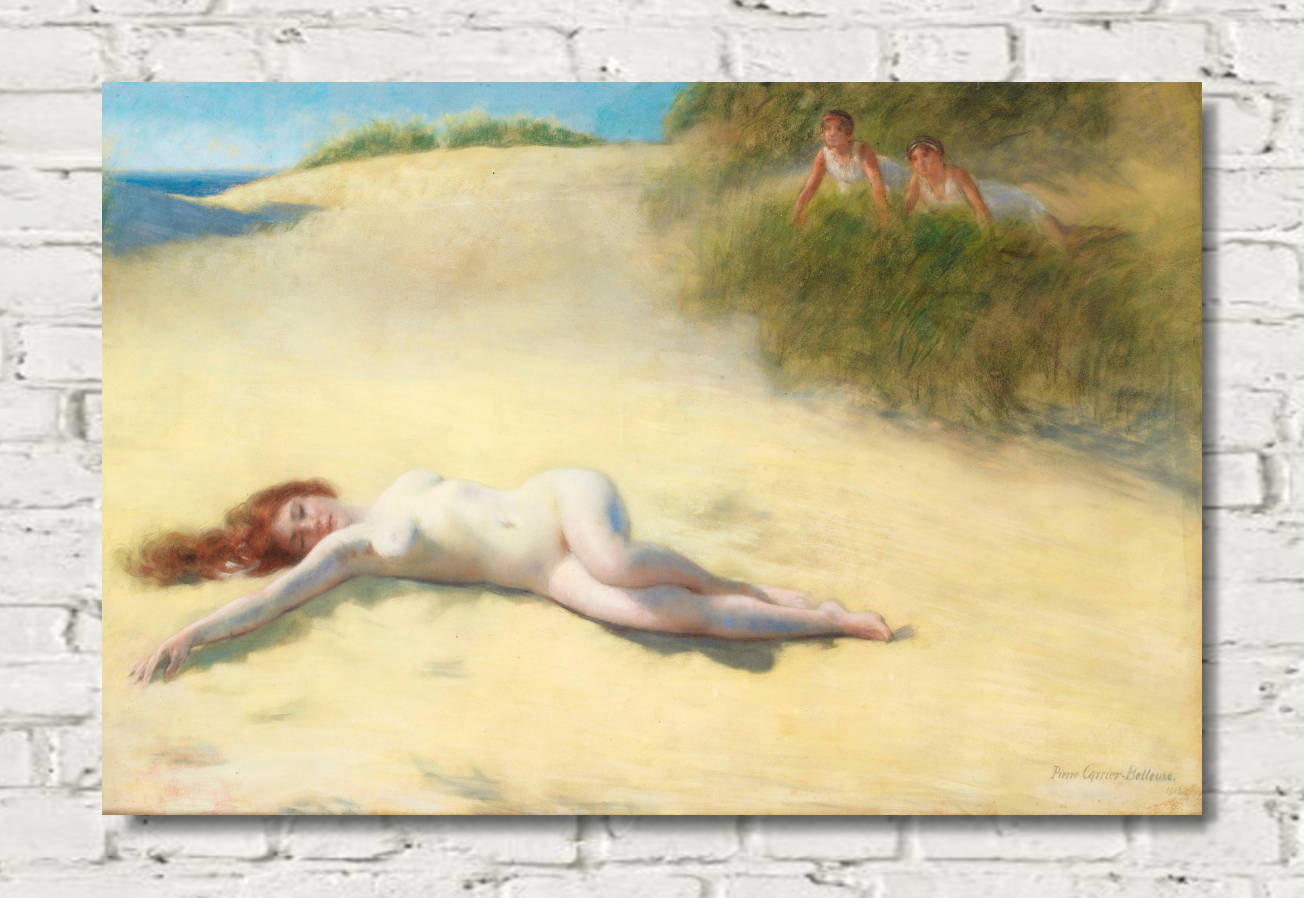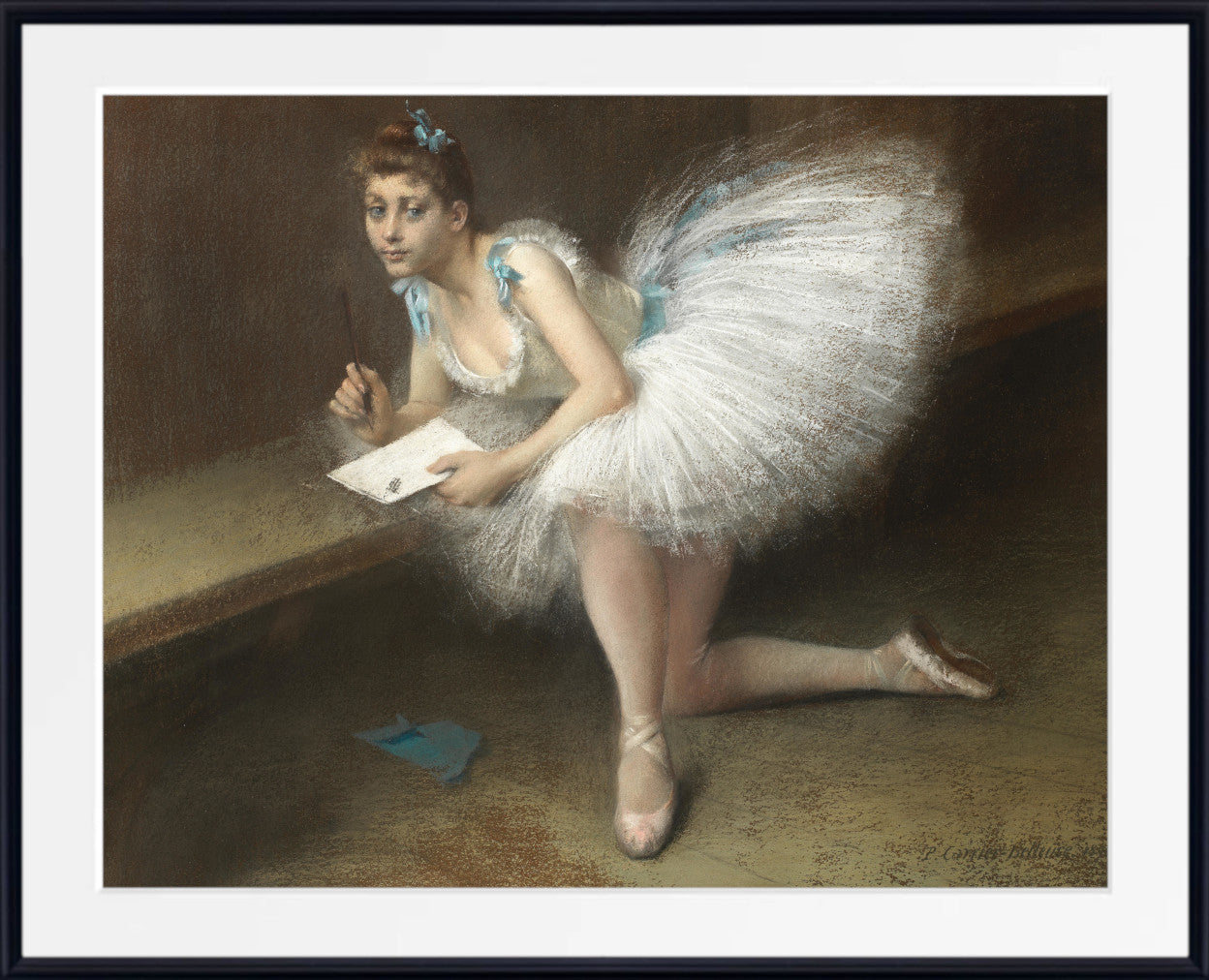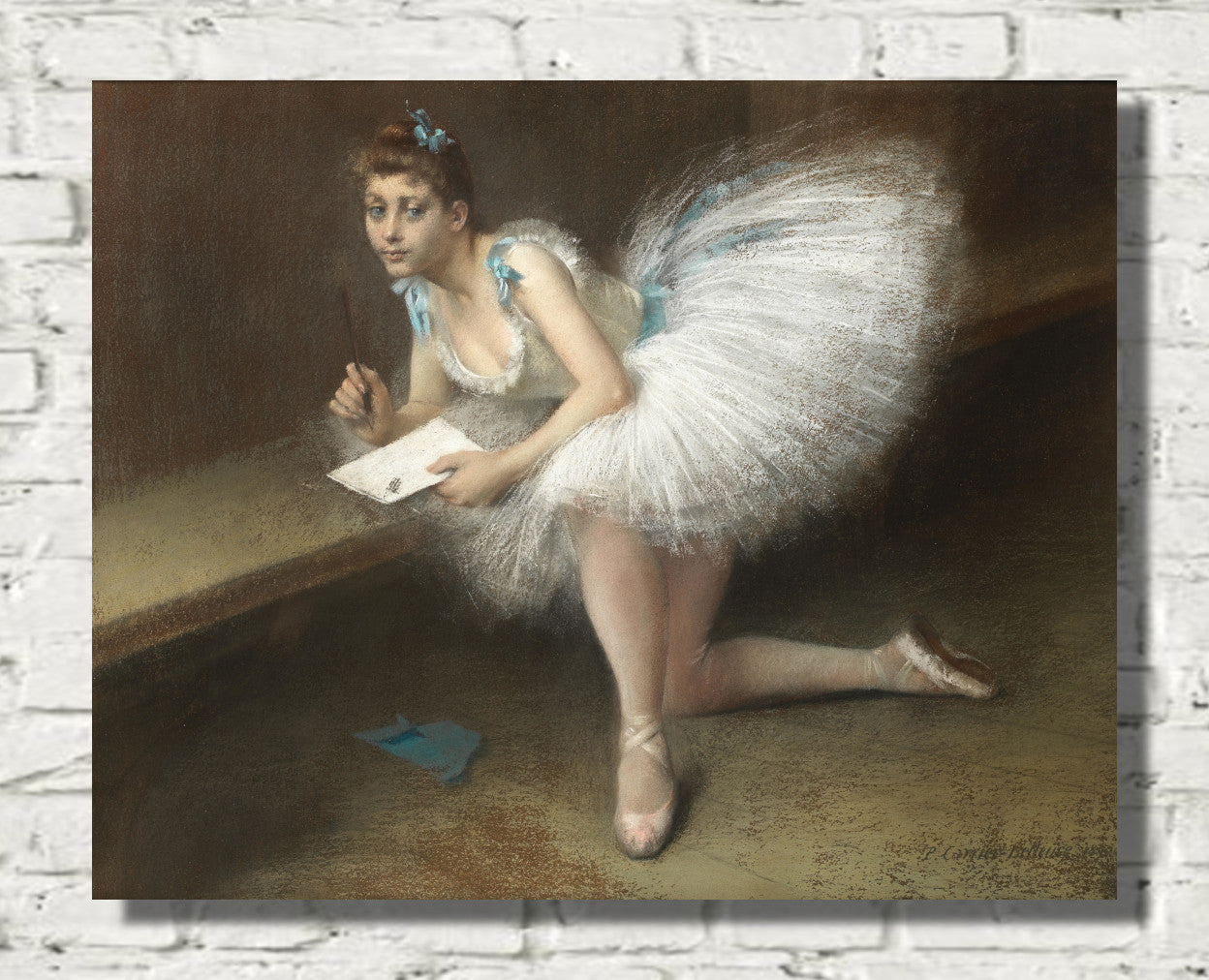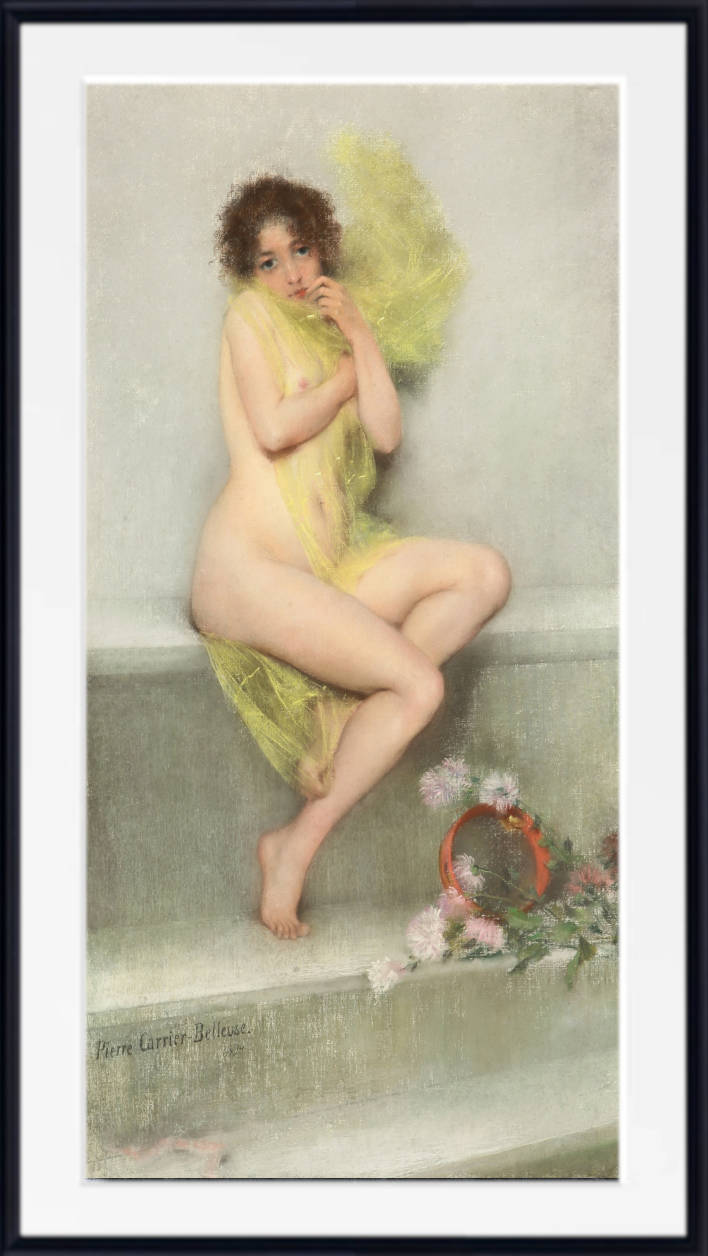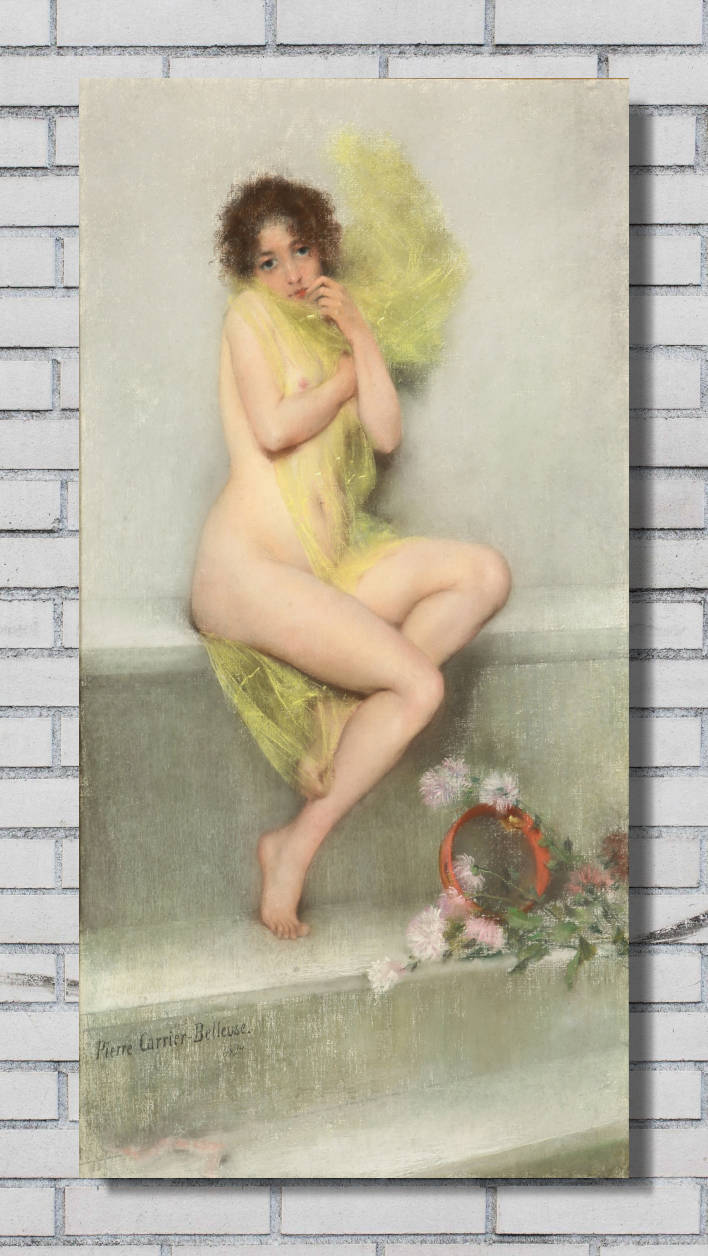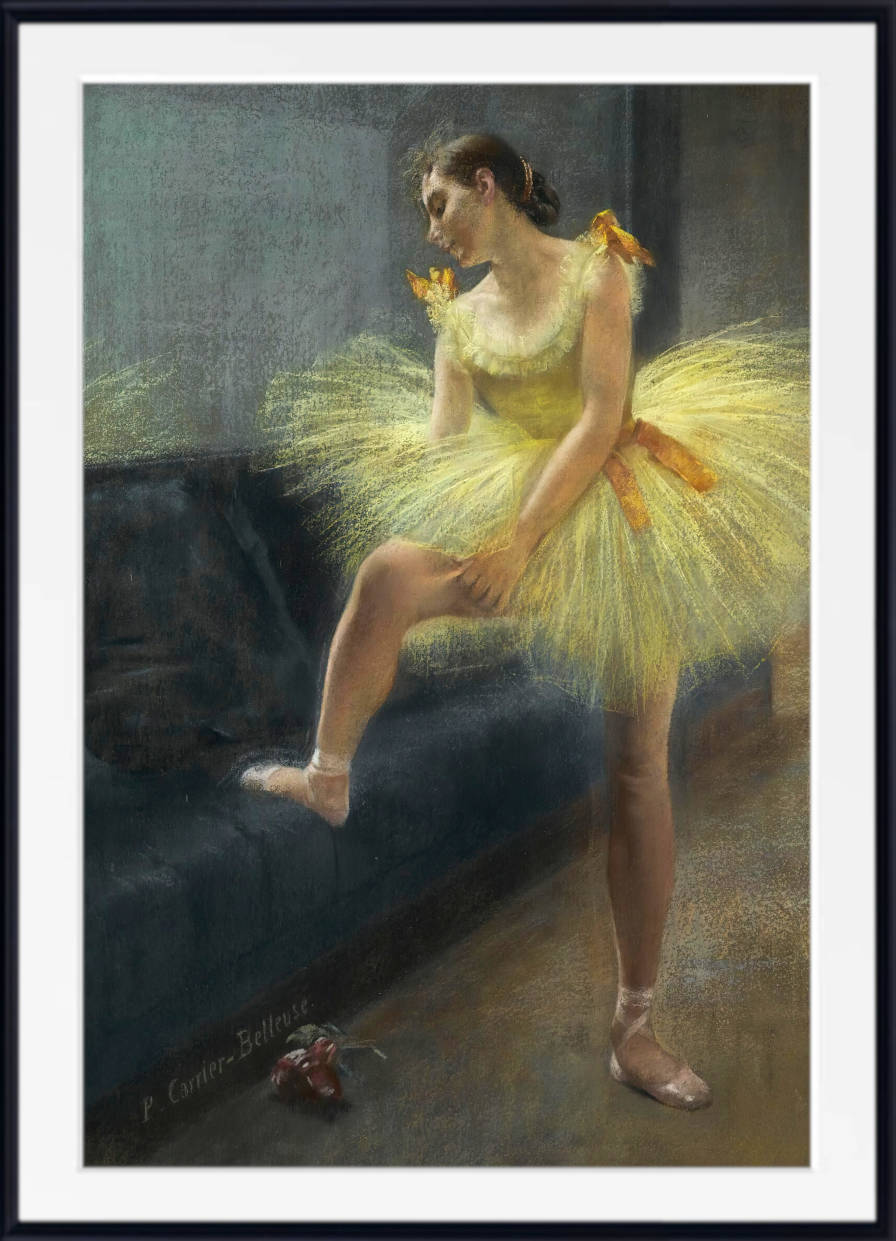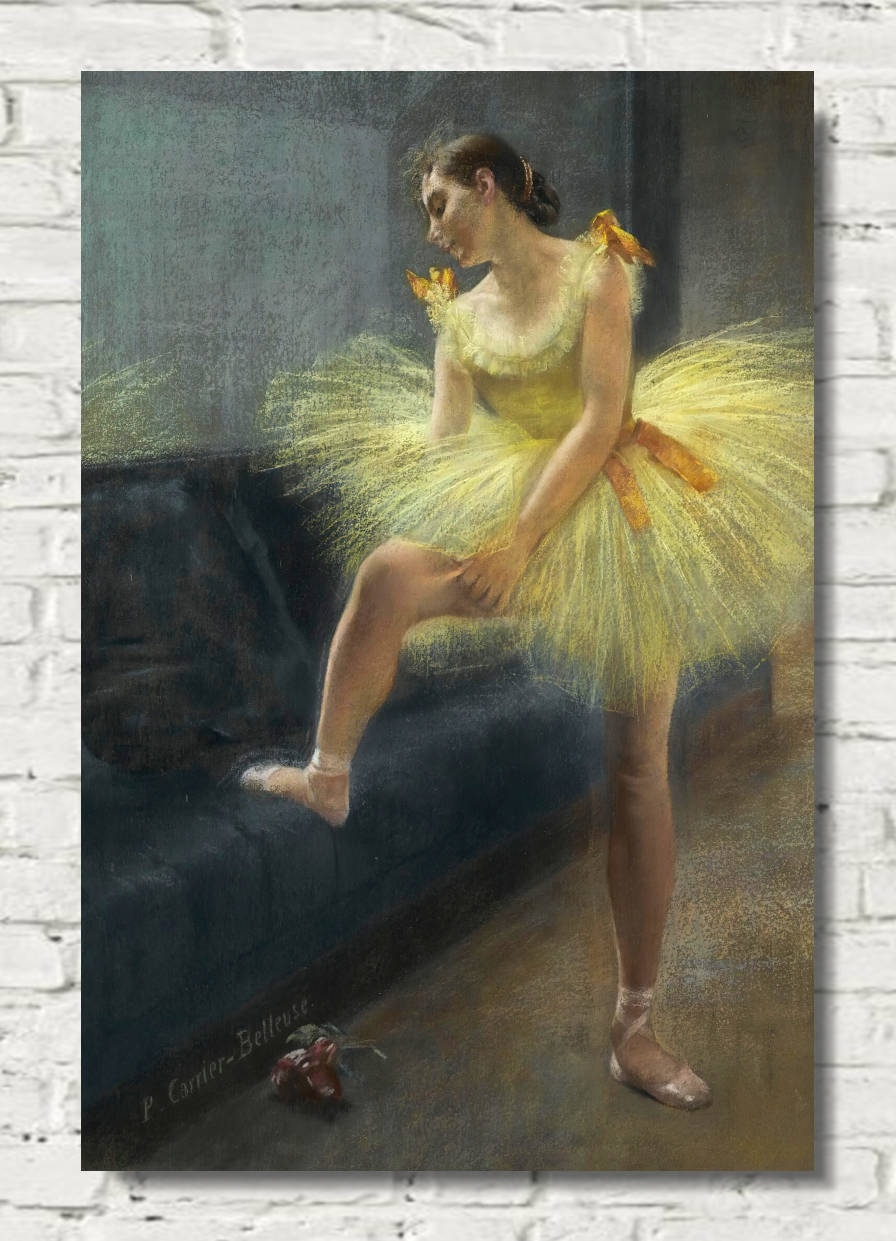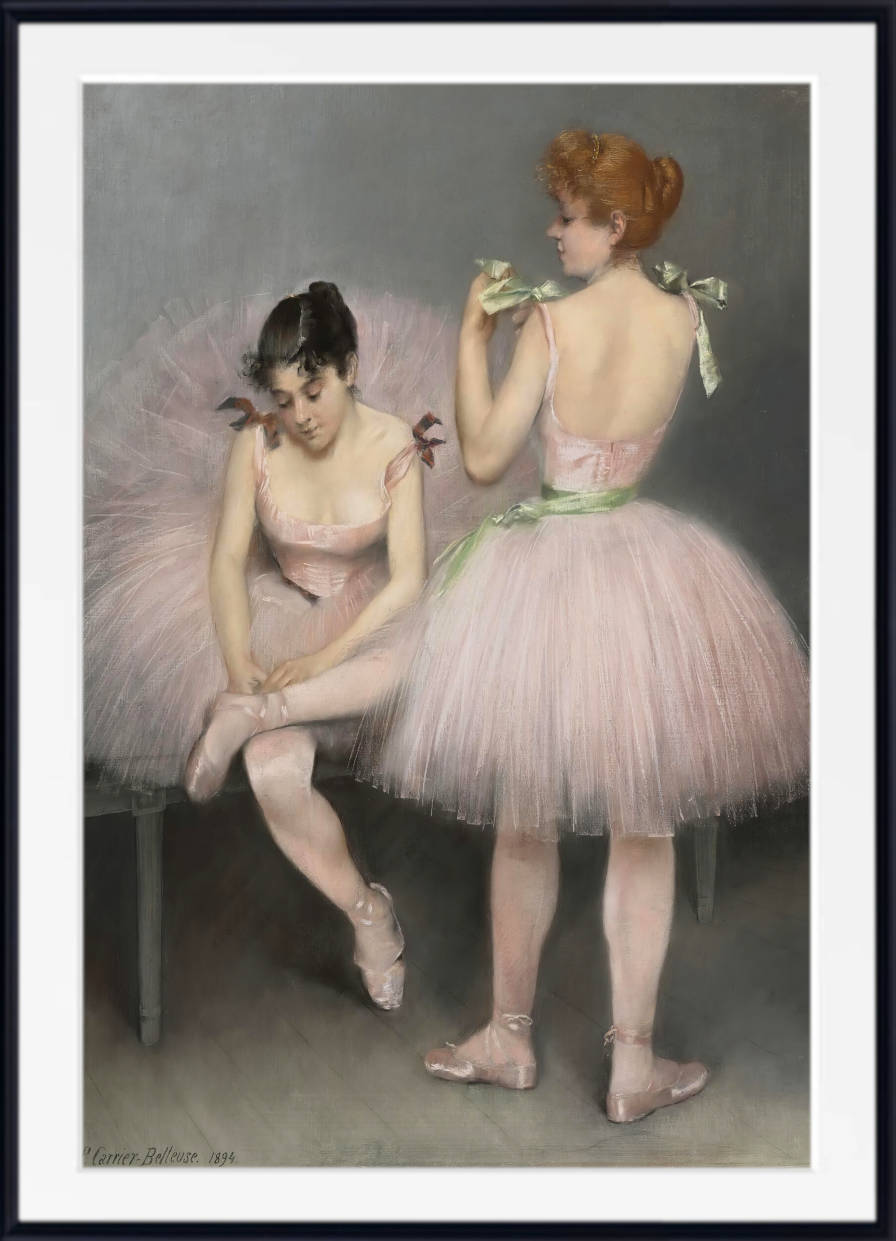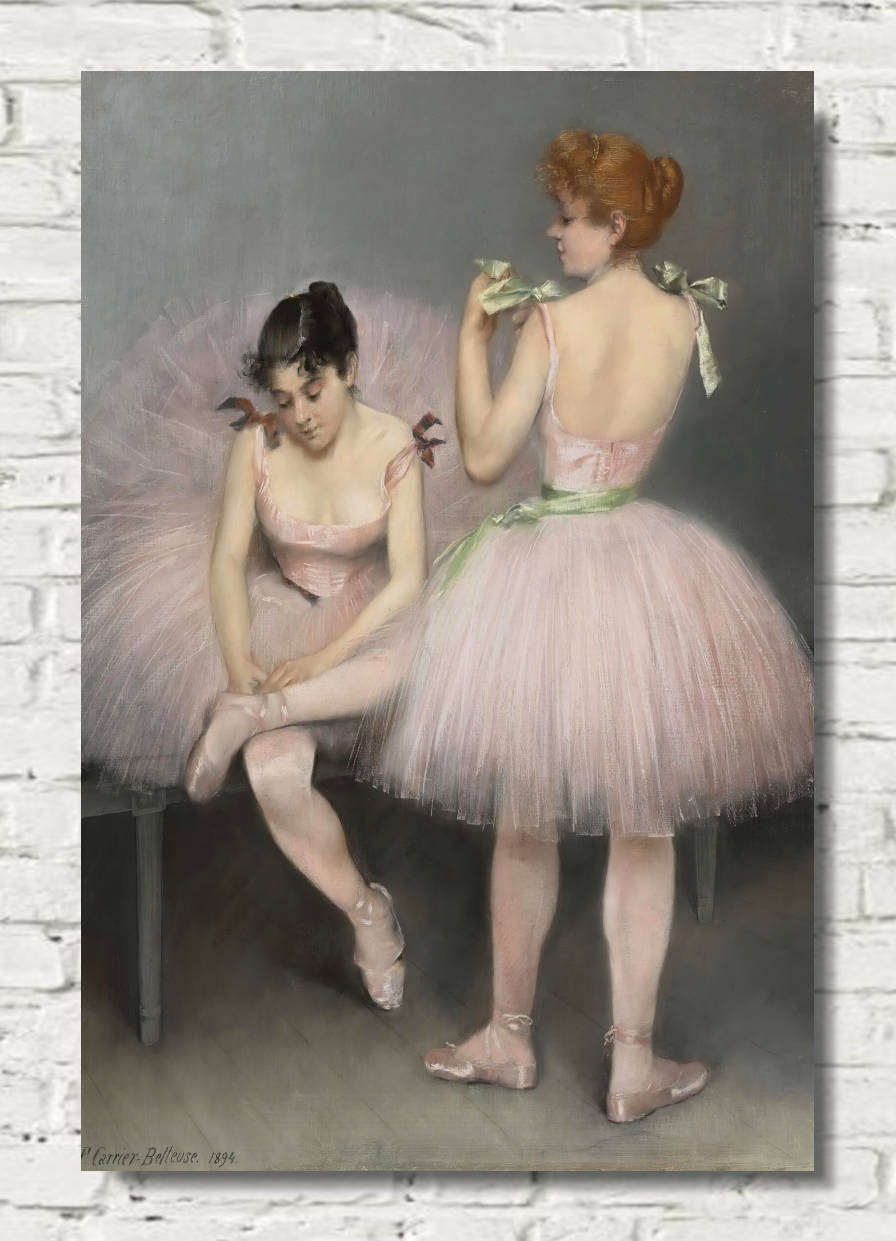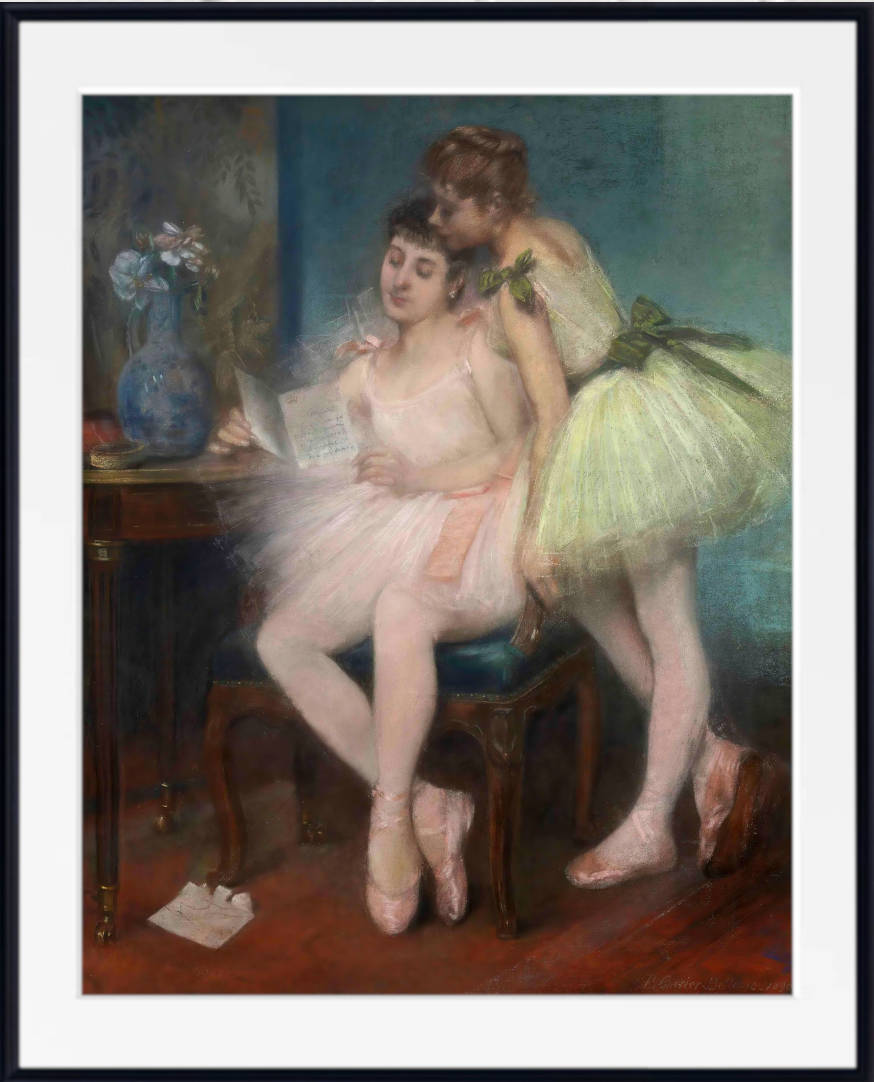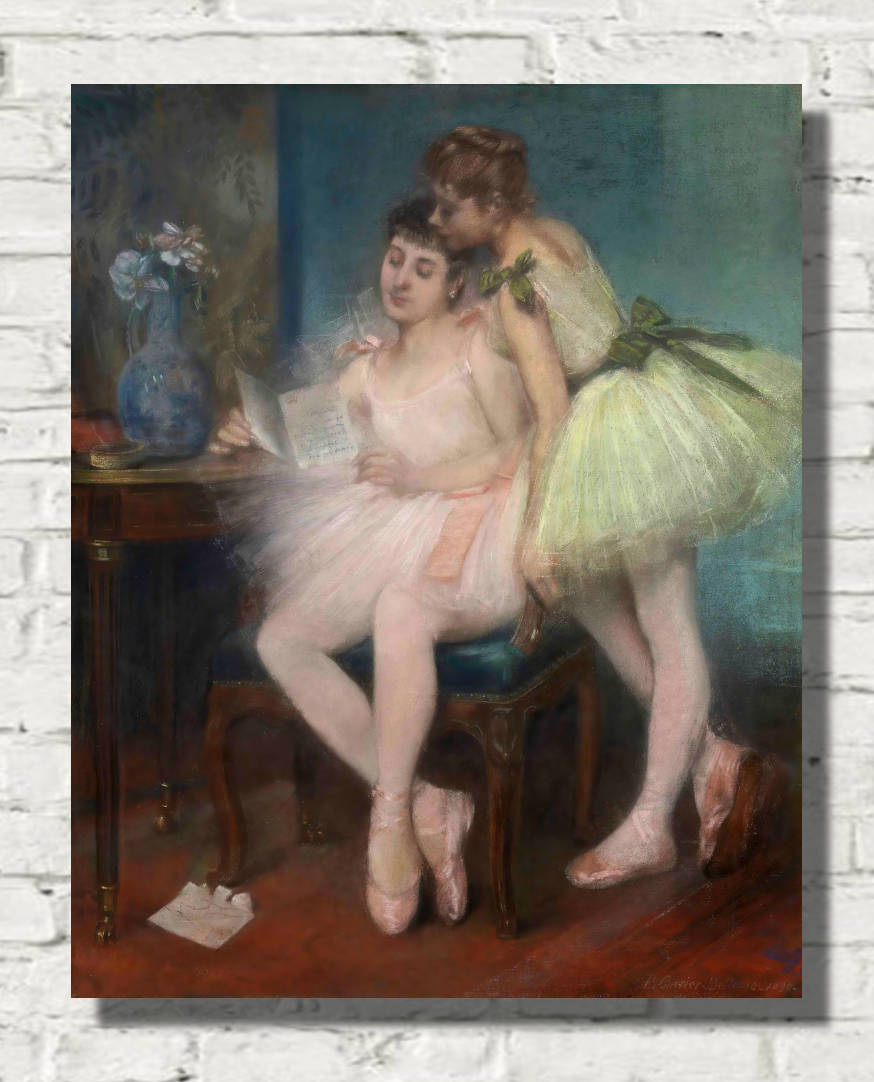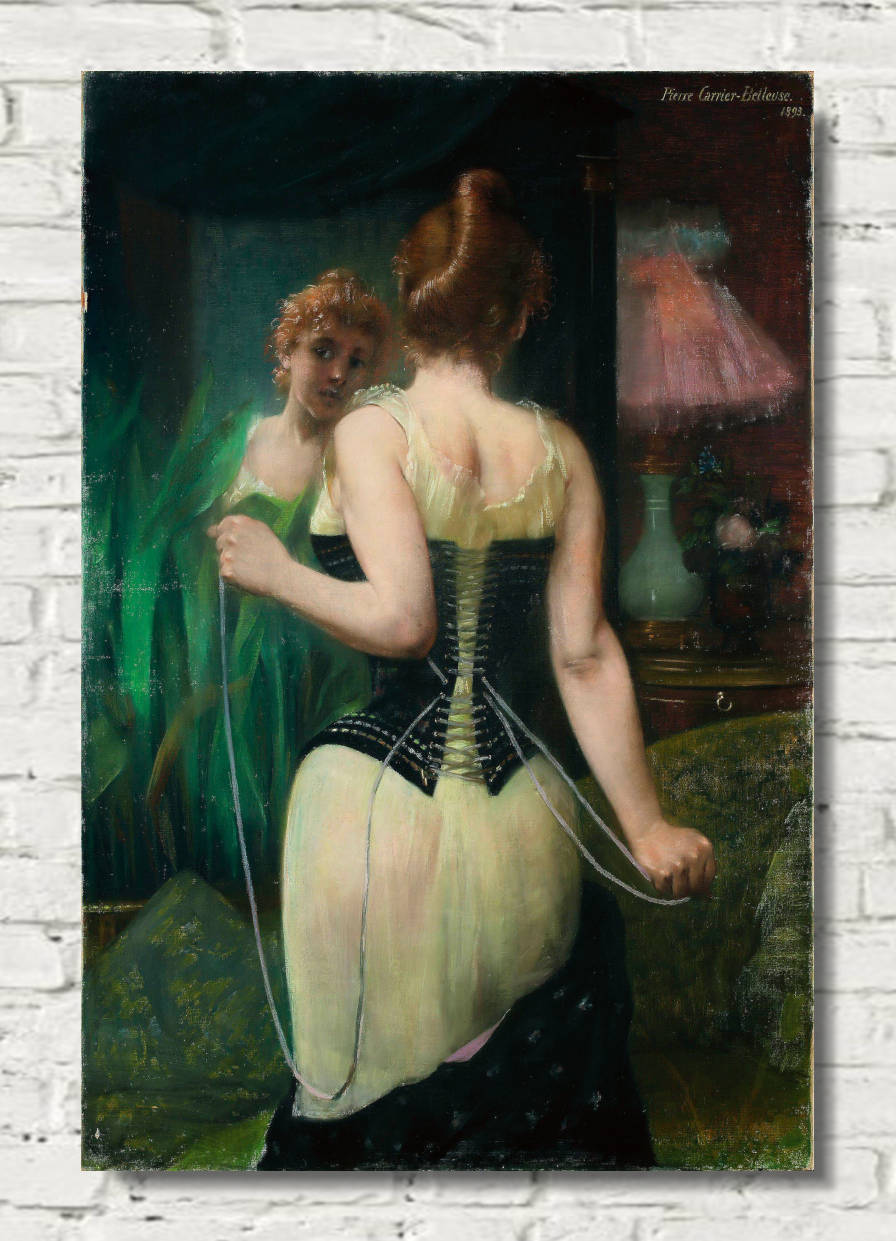Pierre Carrier-Belleuse (1851–1932), a distinguished French artist from the Belle Époque era, is celebrated for his masterful pastel and oil paintings that capture the grace and allure of ballet dancers and scenes from the theater. Known for his sensitive portrayals of movement, light, and mood, Carrier-Belleuse was a painter and illustrator whose works embody the refined elegance and ethereal quality of late 19th-century Paris. The son of the prominent sculptor Albert-Ernest Carrier-Belleuse, Pierre was immersed in a world of creativity from a young age and carried forward the artistic spirit of his lineage, even as he forged his own identity in the art world.
Pierre Carrier-Belleuse Print, The Dancers (1894)
Early Life and Artistic Beginnings
Carrier-Belleuse was born in Paris, where he grew up in an environment brimming with artistic influence. He trained under the guidance of Alexandre Cabanel, a noted French academic painter. This classical foundation shaped Carrier-Belleuse’s approach to art, though he ultimately pursued subjects and techniques that diverged from his teacher’s emphasis on historical and religious scenes. In the bustling art scene of Belle Époque Paris, Pierre developed a unique style that would come to characterize his works: delicate yet dynamic, capturing a fleeting beauty that resonated with the fashionable Parisian art collectors of the time.
Artistic Style and Influence
Carrier-Belleuse's work often focuses on the world of ballet dancers, capturing moments of grace, tension, and introspection. His ability to convey the atmospheric effects of light and shadow, especially through the medium of pastel, is one of his defining features. Unlike many artists of his time who idealized their subjects, Carrier-Belleuse brought a sense of realism to his paintings, displaying his figures in various emotional states, from quiet contemplation to poised elegance. His treatment of pastel, soft yet vibrant, allowed him to capture not just the physical beauty of his subjects but also the ethereal nature of performance itself.
Iconic Works
Carrier-Belleuse produced numerous works that remain celebrated to this day, many of which explore the theme of dance. Here, we’ll examine some of his most iconic works that continue to captivate audiences.
Backstage at the Ballet (1890)
Backstage at the Ballet (1890) is one of Carrier-Belleuse's most renowned paintings, encapsulating the allure and mystery of the ballet world. The painting offers a behind-the-scenes look at ballet dancers as they prepare for the stage, revealing the anticipation, camaraderie, and perhaps the weariness of the dancers. Through his delicate use of pastels, Carrier-Belleuse captures the luminescence of the ballerinas’ tutus and the subtle interplay of light as it filters through the backstage space. The scene is intimate, providing a glimpse into a world typically hidden from the audience's view, making the viewer feel as though they are part of a private, sacred ritual. This painting exemplifies his ability to combine realism with an almost dreamlike quality, allowing the viewer to experience both the beauty and the toil of ballet.
Tendre Aveu
In Tendre Aveu,(Whisper of Love) Carrier-Belleuse explores a more personal, emotional moment between his subjects. This work, whose title translates to “Tender Confession,” captures an intimate exchange that is both tender and charged with emotion. Using a softer palette and his signature pastel technique, Carrier-Belleuse imbues the piece with a delicate softness that underscores the gentle nature of the encounter. The viewer is drawn into the subtle play of expressions and gestures, sensing the depth of feeling conveyed without overt dramatization. It is a testament to Carrier-Belleuse's mastery of mood and his skill in portraying the subtleties of human emotion, hallmarks that made his work resonate with collectors and patrons during his lifetime.
The Chill (1894)
The Chill (1894) presents a different facet of Carrier-Belleuse’s work, capturing a scene that juxtaposes fragility and resilience. Here, he depicts a dancer shielding herself from a cold draft, possibly in the confines of a poorly heated rehearsal space or backstage area. Her expression and posture convey vulnerability, yet her resolve to endure the discomfort speaks to the dedication required in the world of ballet. The muted color palette and careful rendering of the figure highlight the physical and emotional strains behind the allure of performance. This painting subtly reveals the often-overlooked sacrifices dancers make, further endearing Carrier-Belleuse’s work to audiences and art collectors alike.
Legacy and Influence
Pierre Carrier-Belleuse’s contributions to Belle Époque art have left a lasting legacy in the art world. His works continue to be celebrated for their unique ability to capture both the splendor and the hardship within the world of ballet. Unlike many of his contemporaries, Carrier-Belleuse didn’t idealize his subjects. Instead, he balanced their elegance with their emotional complexity, revealing a depth of character that continues to resonate with viewers today. His influence can be seen in later artists who sought to capture the raw beauty and vulnerability of performers, and his works have found homes in prestigious museums and private collections worldwide.
As his paintings frequently appear in esteemed auctions at Sotheby’s and Christie’s, his legacy endures, with new generations of art collectors and ballet enthusiasts appreciating his dedication to capturing the human spirit in its most beautiful and vulnerable moments. Carrier-Belleuse’s paintings remain a timeless celebration of the artistic spirit, embodying the grace, determination, and humanity of the dancers he portrayed.
References
- Sotheby’s Lot Essays and Auction Listings
- Christie’s Auction House Archives and Catalogue Raisonné
- French Belle Époque Artistry: A Historical Perspective
- The Art of Pastel: Techniques of Pierre Carrier-Belleuse
- "Pierre Carrier-Belleuse" - Museum of Fine Arts Collections

